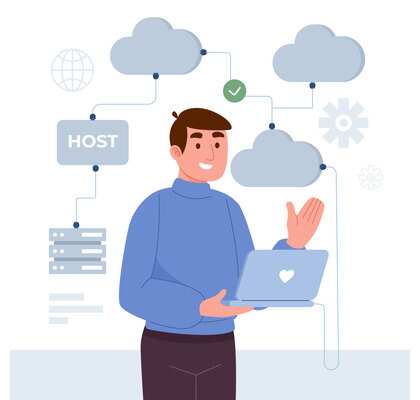Shaping the Education Landscape: Uptoskills’s Impact
Shaping the Education Landscape: Uptoskills’s Impact
Introduction
In today’s fast-paced and ever-changing world, education plays a crucial role in shaping individuals’ lives and society as a whole. It equips individuals with the knowledge, skills, and capabilities necessary to thrive in their personal and professional pursuits. Recognizing the transformative power of education, Uptoskills has emerged as a leading force in reshaping the education landscape. Through its innovative approaches, comprehensive curriculum, and commitment to excellence, Uptoskills has made a significant impact on individuals, communities, and the broader educational ecosystem.
Empowering Learners Through Technology
Uptoskills leverages technology to empower learners and transform the traditional education model. By harnessing the power of digital platforms and online learning, Uptoskills has made education accessible to individuals worldwide, breaking down the barriers of time, space, and resources. Through its user-friendly online learning platform, learners can access high-quality educational resources, interactive modules, and engaging multimedia content, enabling them to study at their own pace and from anywhere with an internet connection.
The utilization of technology also enables Uptoskills to offer a wide range of courses and programs across various disciplines. From programming and data science to business management and creative arts, Uptoskills caters to diverse learner interests and aspirations. By providing a comprehensive catalog of courses, Uptoskills ensures that individuals can acquire the skills and knowledge necessary to thrive in their desired fields, regardless of their geographical location or traditional educational opportunities.
Innovative Teaching and Learning Methods
Uptoskills stands out for its commitment to innovation in teaching and learning methods. The organization recognizes that traditional, one-size-fits-all approaches to education may not cater to the diverse learning styles, needs, and preferences of individuals. As a result, Uptoskills has pioneered adaptive learning techniques, leveraging artificial intelligence and data analytics to personalize the learning experience for each learner.
Through adaptive learning, Uptoskills tailors course content, delivery methods, and assessments to match learners’ individual strengths and areas for improvement. By analyzing learners’ progress, performance, and preferences, Uptoskills’s intelligent algorithms can provide personalized recommendations, feedback, and additional resources to optimize learning outcomes. This individualized approach enhances learner engagement, motivation, and comprehension, leading to better knowledge retention and practical application of skills.
Moreover, Uptoskills promotes collaborative learning environments, fostering peer-to-peer interactions, and encouraging active participation among learners. Through virtual study groups, discussion forums, and interactive assignments, learners can exchange ideas, share insights, and learn from one another’s experiences. This collaborative approach not only enhances learning outcomes but also cultivates essential interpersonal and communication skills that are highly valued in today’s interconnected world.
Industry-Relevant Curriculum and Skill Development
One of the key aspects of Uptoskills’s impact on the education landscape is its commitment to providing industry-relevant curriculum and skill development opportunities. Recognizing the rapid pace of technological advancements and evolving job market demands, Uptoskills ensures that its courses align with the needs of industries and employers.
The organization collaborates closely with industry experts, professionals, and employers to design and update its curriculum regularly. This approach ensures that learners gain practical skills and knowledge that are directly applicable to real-world scenarios and job requirements. By bridging the gap between academic learning and industry expectations, Uptoskills equips learners with the tools necessary to succeed in their careers and contribute meaningfully to their respective fields.
Beyond theoretical knowledge, Uptoskills emphasizes hands-on, project-based learning to foster practical application and skill development. Learners are encouraged to work on real-world projects, engage in simulations, and solve authentic problems. This approach nurtures critical thinking, problem-solving abilities, and adaptability—the skills that are vital in today’s rapidly changing work environments.
Career Advancement and Professional Development
Uptoskills’s impact extends beyond equipping learners with technical skills and knowledge. The organization understands the importance of career advancement and professional development. To support learners in their career journeys, Uptoskills provides comprehensive career guidance, mentorship, and job placement support.
Through career counseling sessions, learners receive personalized advice on career pathways, skill enhancement, and job search strategies. Uptoskills also offers mentorship programs, connecting learners with industry professionals who provide valuable insights, guidance, and networking opportunities. Additionally, Uptoskills collaborates with industry partners to facilitate internships, apprenticeships, and job placements for learners, enabling them to gain practical experience and kick-start their careers.
Uptoskills’s impact on individuals’ career trajectories is evident in the success stories of its learners. Many individuals have attributed their career advancements, salary increases, and job satisfaction to the skills and knowledge acquired through Uptoskills’s programs. By empowering individuals with industry-relevant skills and facilitating their professional growth, Uptoskills is reshaping the employment landscape and contributing to economic progress.
Community Building and Social Impact
Beyond the individual level, Uptoskills recognizes the significance of community building and social impact. The organization fosters a vibrant and supportive learning community that goes beyond geographical boundaries. Learners from diverse backgrounds and locations connect and collaborate, creating a global network of motivated individuals striving for personal and collective growth.
Uptoskills encourages learners to give back to their communities and make a positive impact. Through initiatives such as volunteering, mentoring, and knowledge sharing, Uptoskills promotes social responsibility and the spirit of paying it forward. Learners are empowered to apply their newly acquired skills and knowledge to address social challenges, contribute to local projects, and make a difference in their communities.
Conclusion
Uptoskills’s impact on the education landscape is profound and far-reaching. Through its innovative use of technology, personalized learning approaches, industry-relevant curriculum, and focus on career advancement, Uptoskills has transformed the way education is delivered and experienced. By empowering learners with the skills and knowledge needed to thrive in today’s dynamic world, Uptoskills is shaping the education landscape, unlocking individuals’ potential, and driving social and economic progress. As Uptoskills continues to expand its reach and impact, it is poised to make a lasting contribution to the future of education.

































